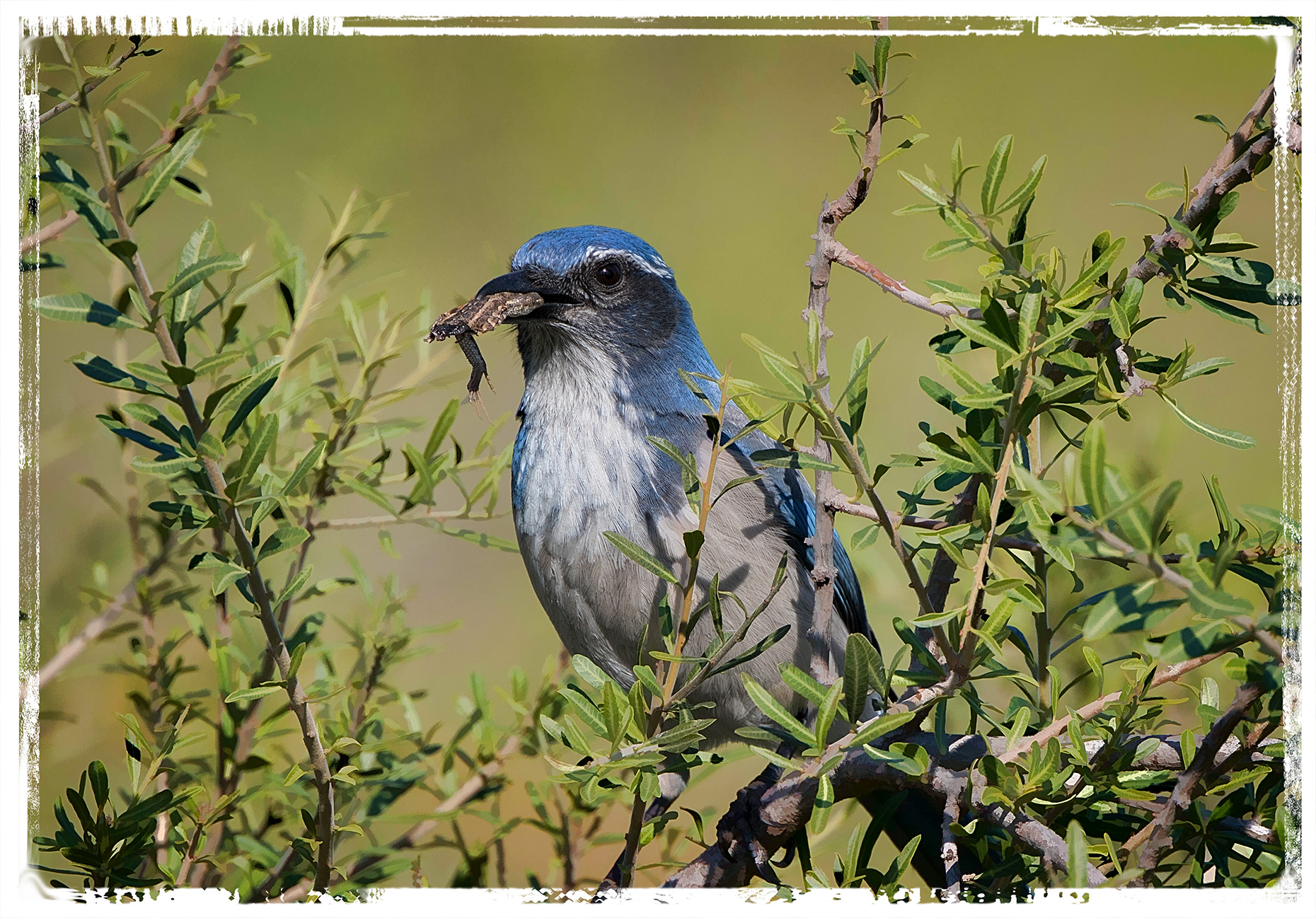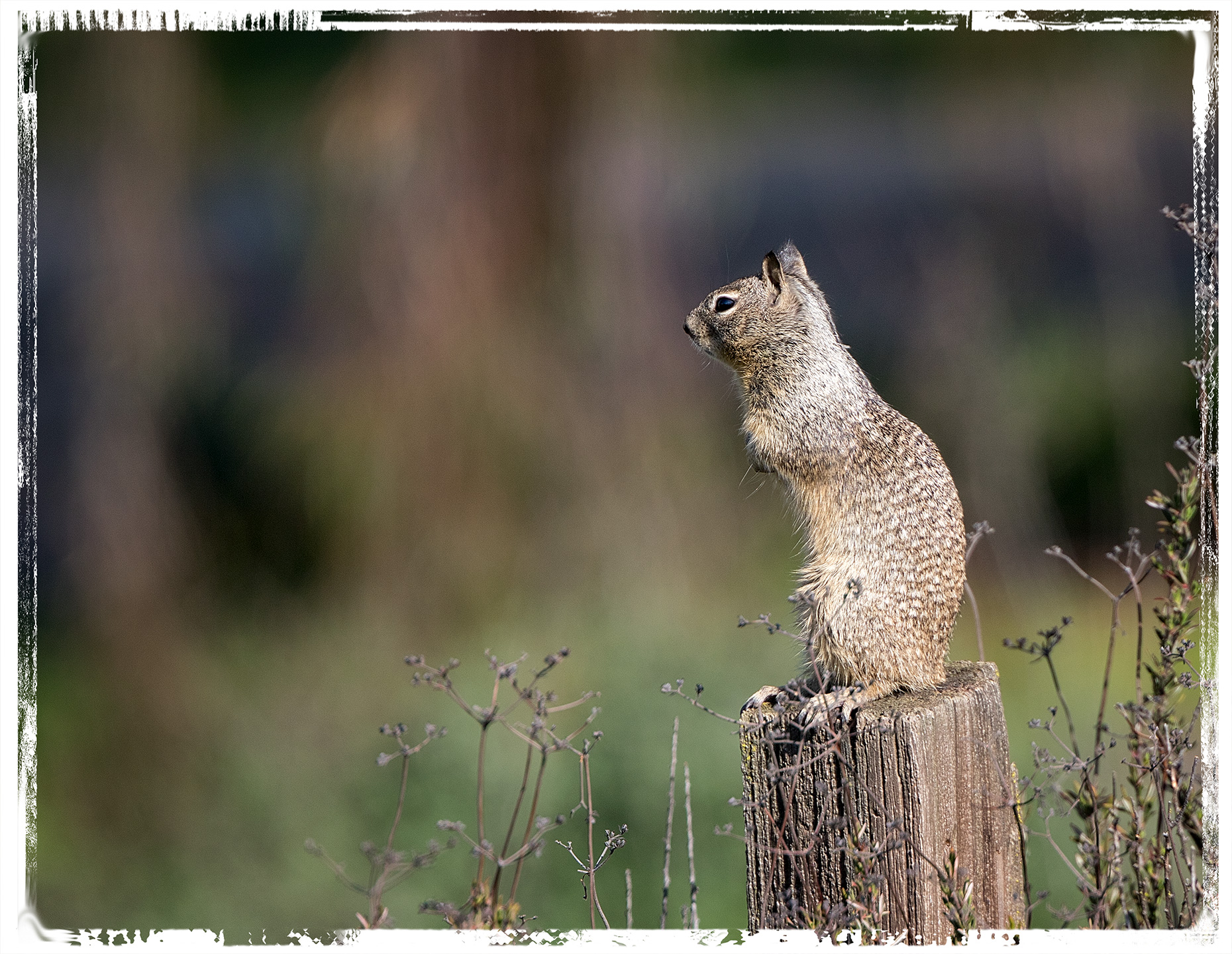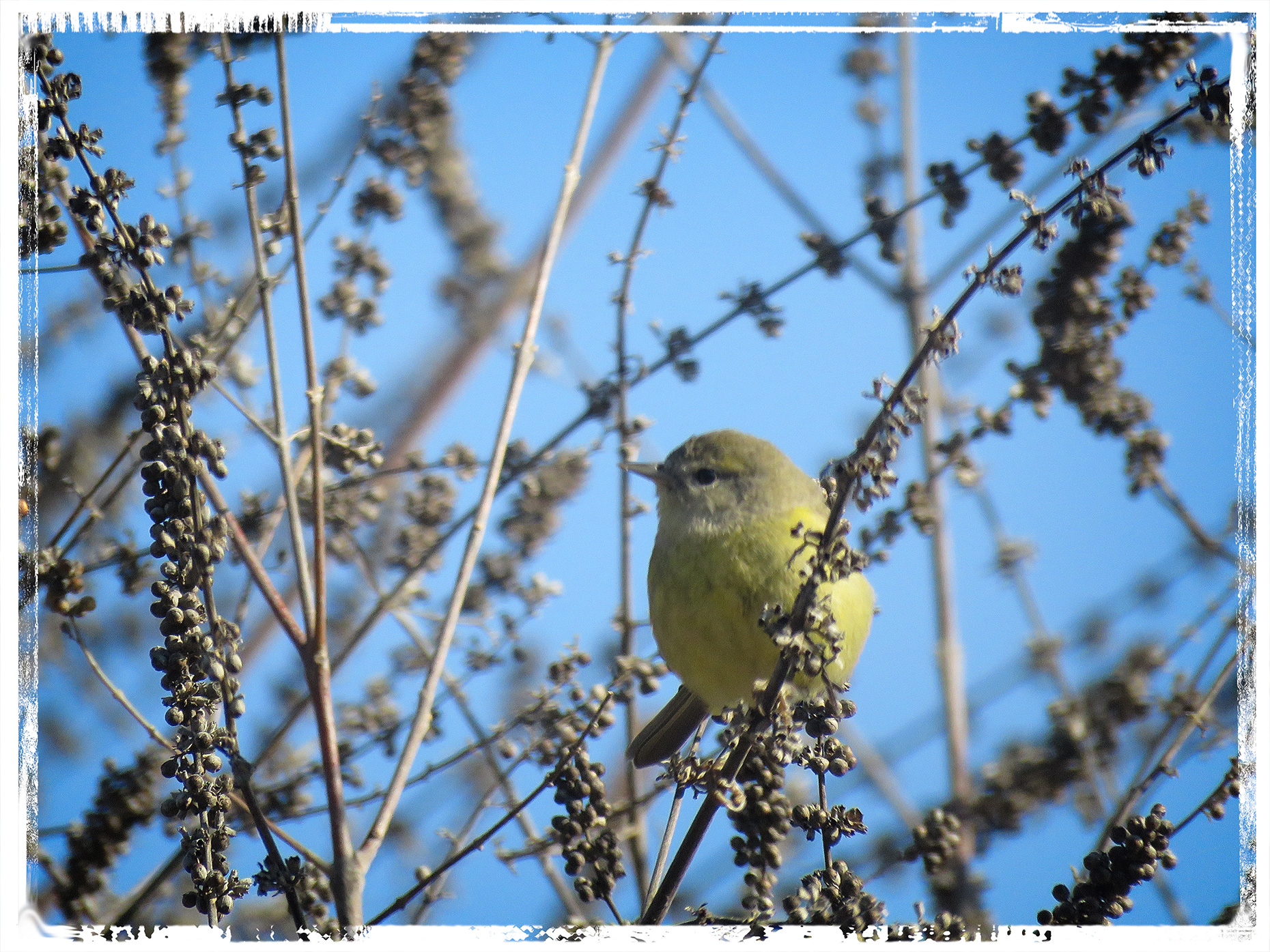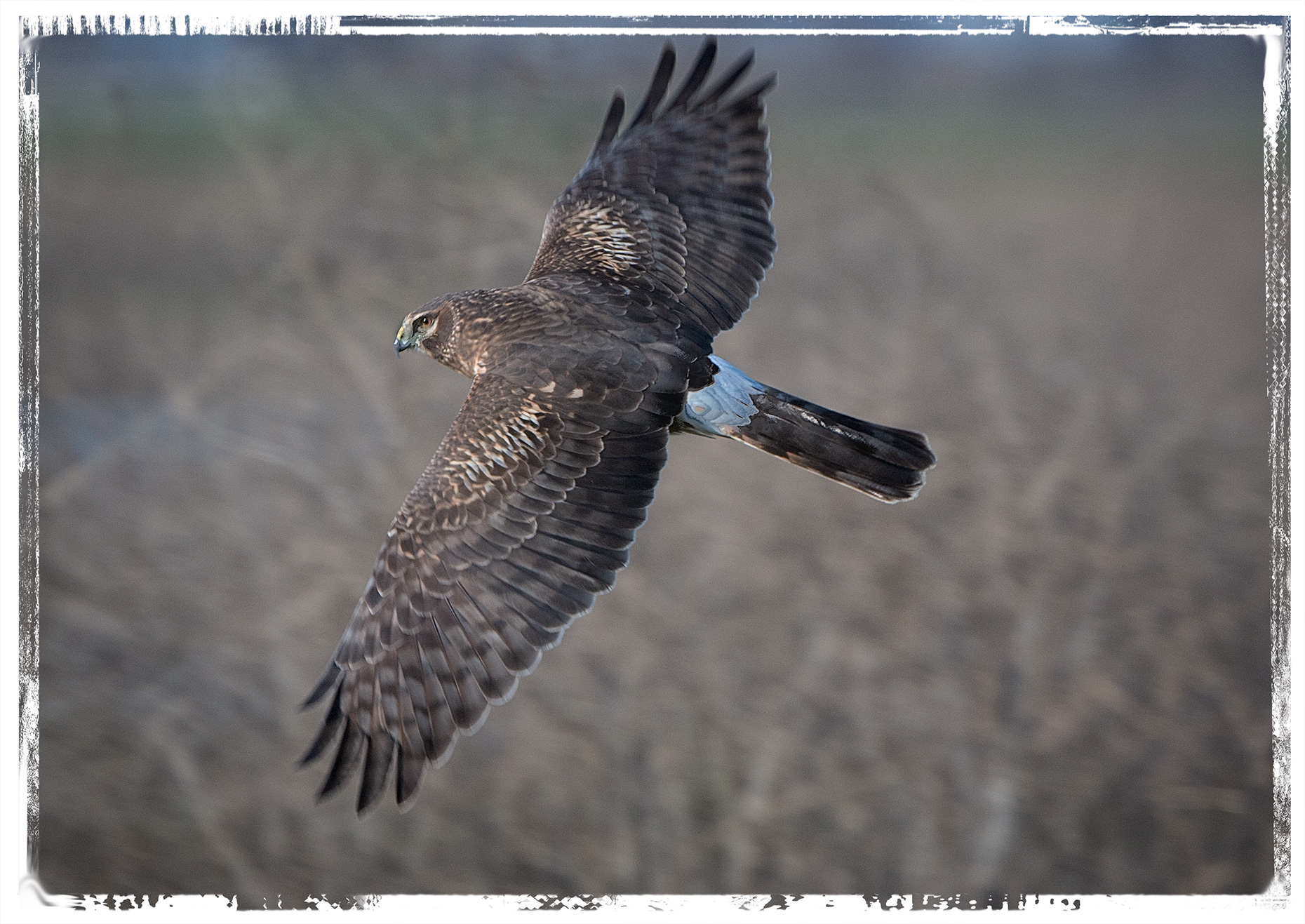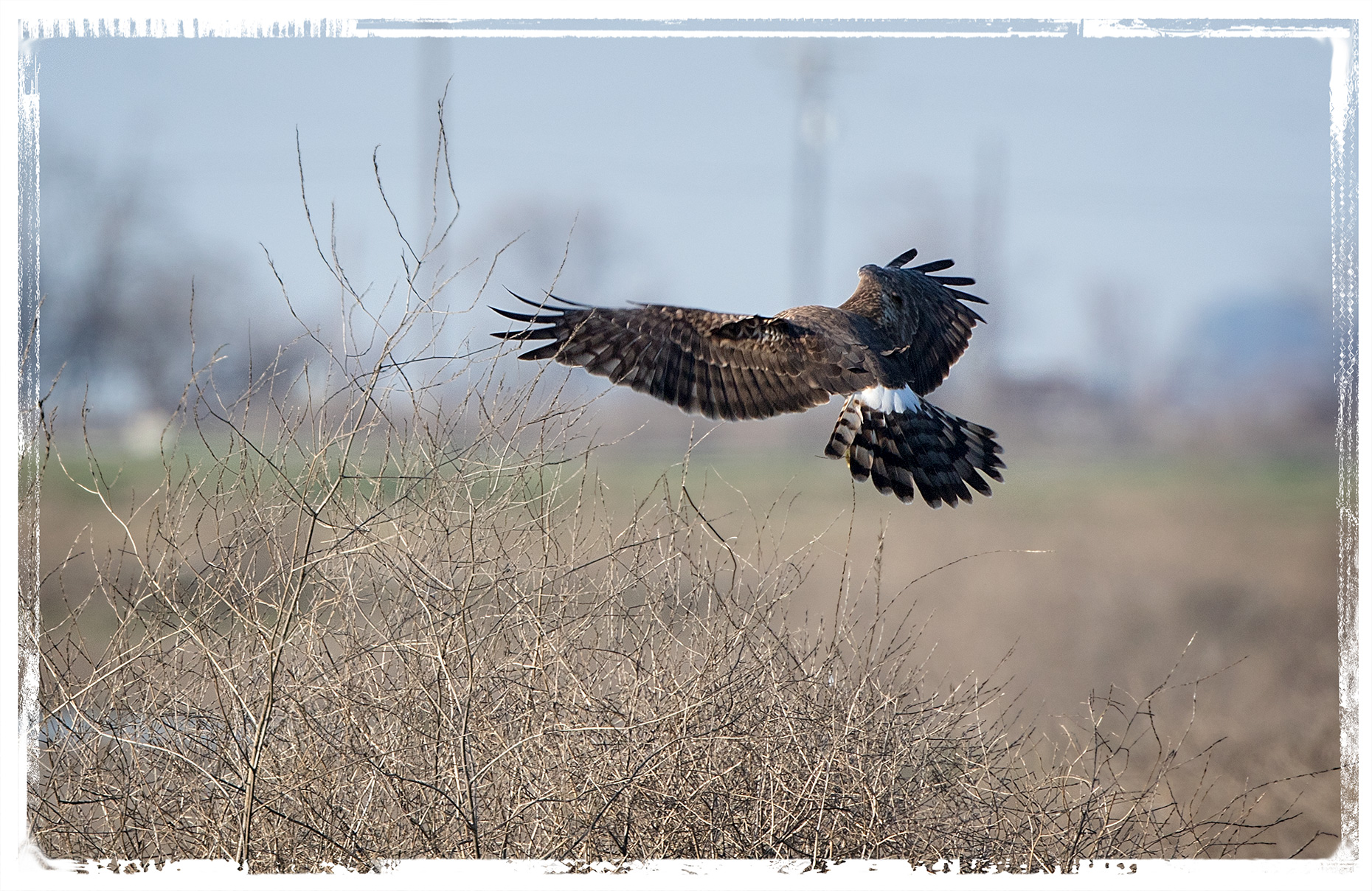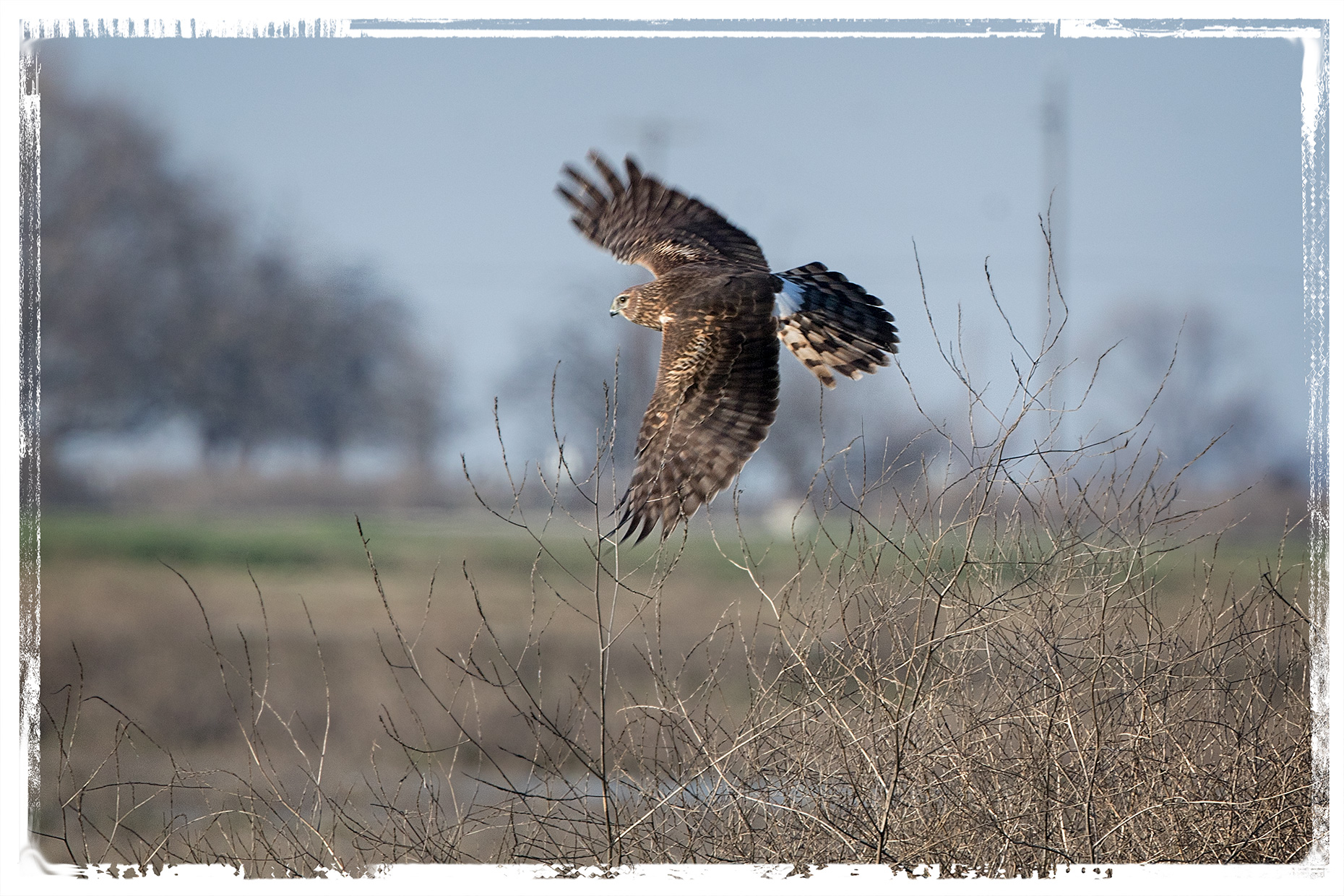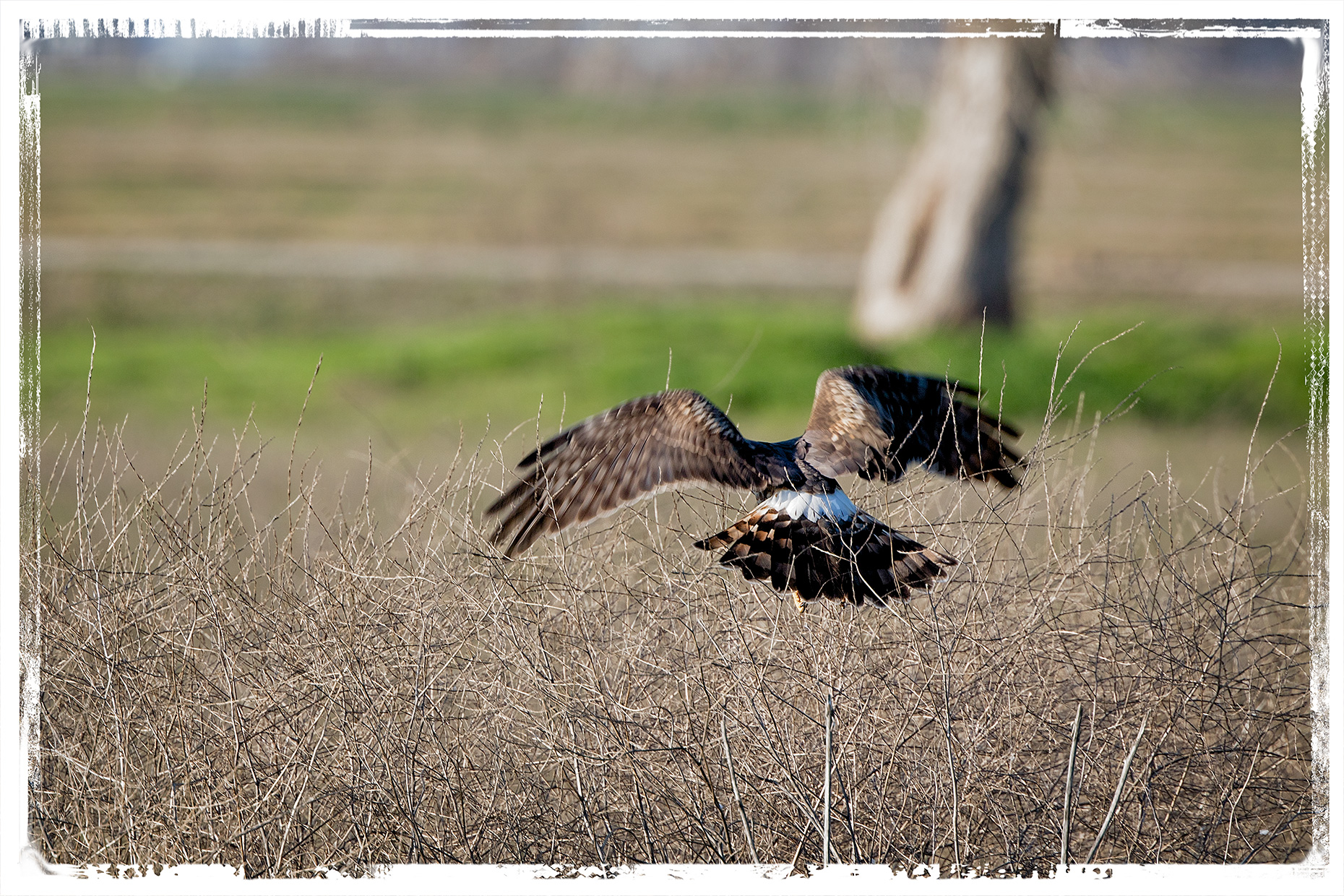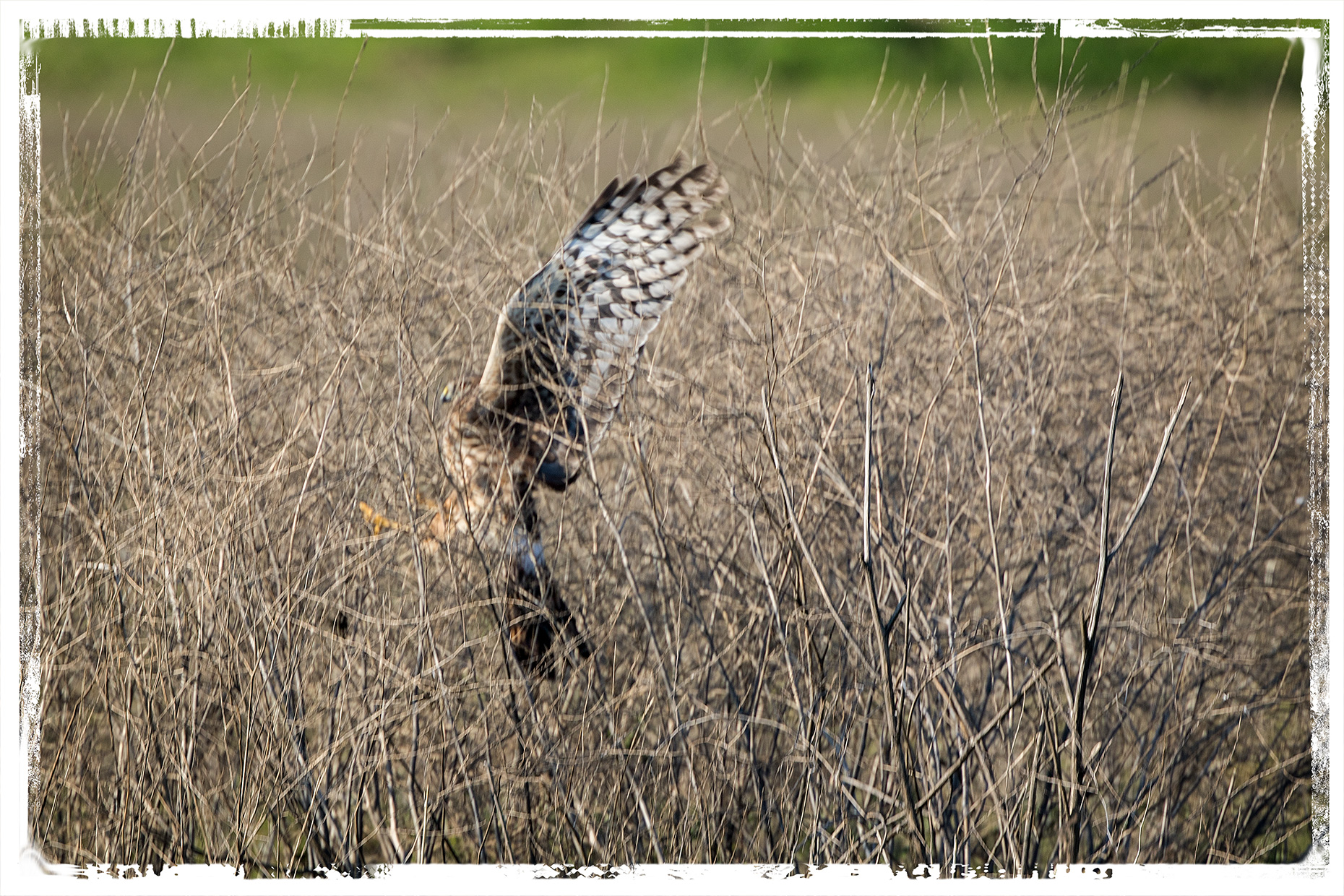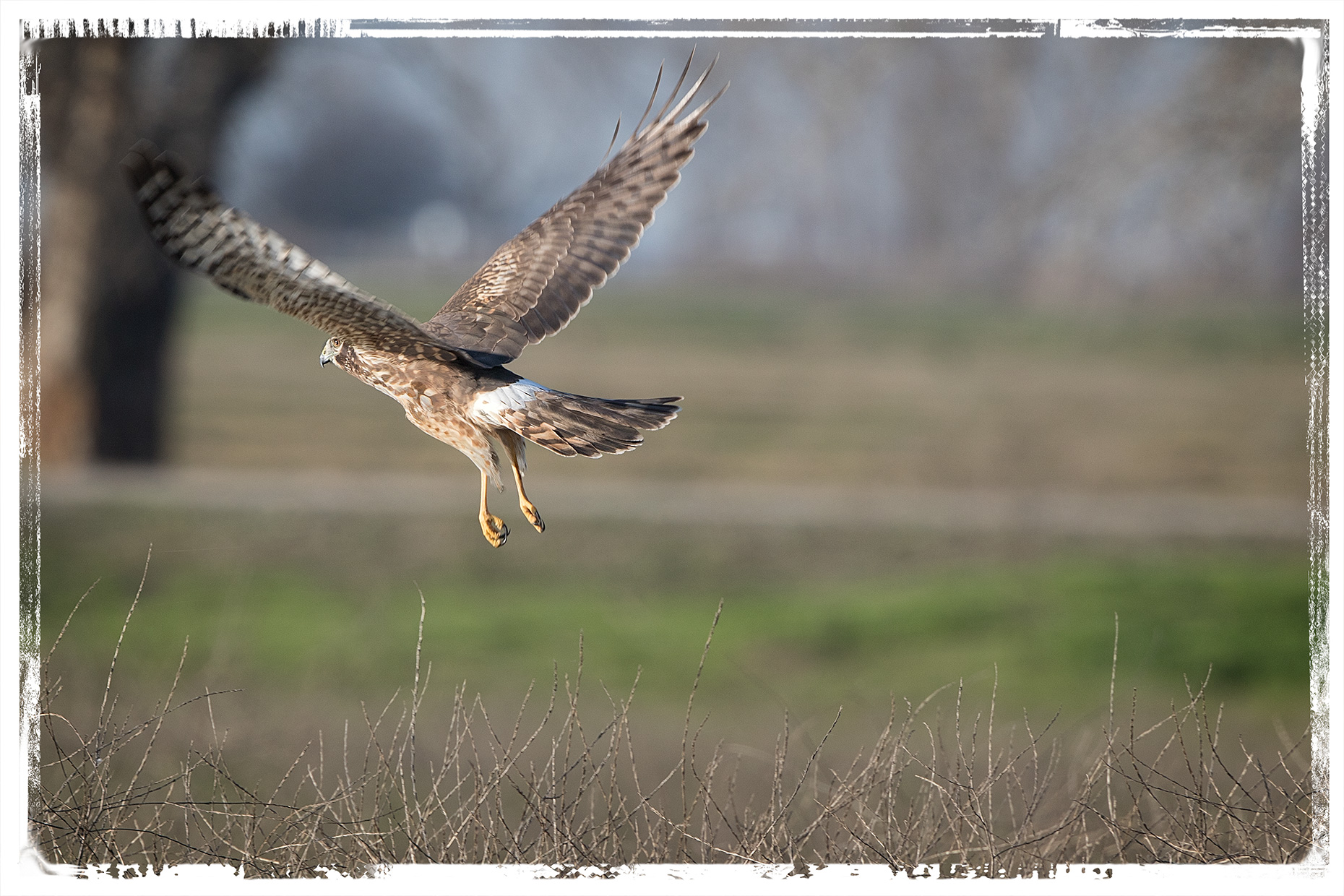We visited a local garden while in Fresno, and I took my small Canon SX60HS figuring I would just be photographing plants and wouldn’t need my birding lens.

We’d almost finished our visit when I found a really birdy area, with birds flying back and forth between trees. This bird, which I didn’t recognize, repeatedly drove away all the other birds

like this Black Phoebe

away from its tree.

After getting my birding lens, I returned to try to capture better shots like this one of a Yellow-Rumped Warbler grabbing berries from the tree before the other bird drove it off.

It wasn’t until I took this profile shot of the unidentified bird that I realized it was actually just a Mockingbird,

a bird I’d taken pictures of the day before at Merced and many times before in Mary’s Santa Rosa backyard.
I’m still not sure why I hadn’t recognized it as a Mockingbird immediately, but I think the front view makes the Mockingbird seem larger than it does from the side. Secondly, I had never thought of Mockingbirds as aggressive birds since they were constantly being harassed by Scrub Jays at Mary’s house.
Finally, it’s probably context. I’ve gotten about a “first” before in the Pacific Northwest only to realize that the bird I was trying to photograph was a Scrub Jay, a bird I see all over California but seldom see in the Pacific Northwest. It’s not uncommon to have the problem when we see people in a different context than we’re used to. Students used to be surprised when they saw me in the grocery store as if somehow teachers only existed in the classroom and had no need of food.

